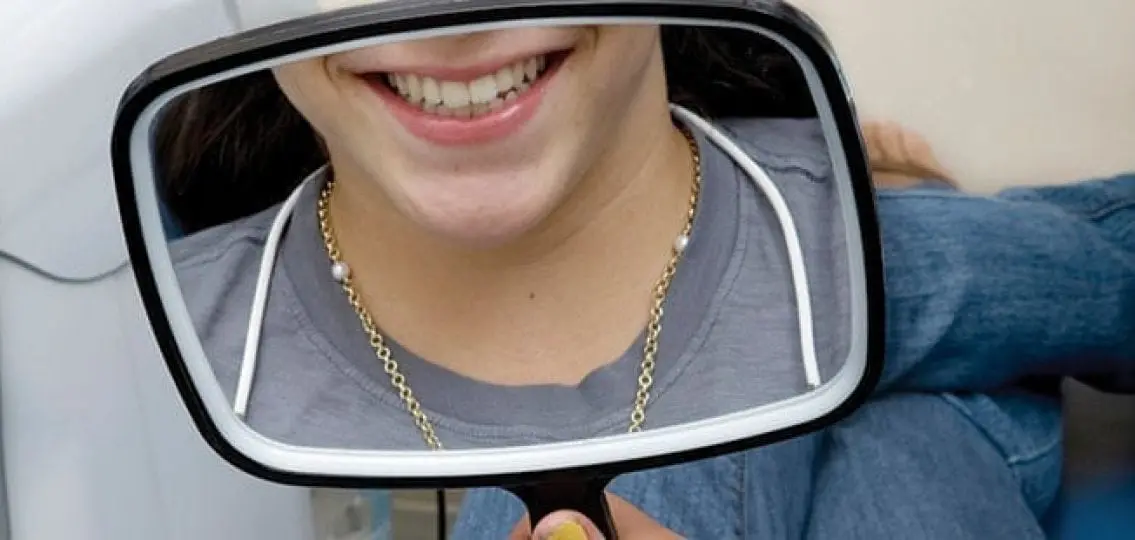Getting your braces off just might be the best feeling in the world. Your son or daughter has spent two years in braces and elastics, and you’ve invested a lot in them, too. How do you keep that beautiful smile? Your Teen asked Dr. Philip D. Bomeli, DDS, MS, of Solon Orthodontics in Ohio for advice about what to do after getting your braces taken off.

Q: You’re getting your braces off! Does this mean you are good to go?
Bomeli: Well, no. After taking braces off, it takes between one and a half to two years for the bone structures and gums to get used to the new tooth positions. After that period, teeth are less likely to move, or at least they move at a slower pace. Two years after getting your braces off, things are more solidified.
Q: So that means … retainers?
Bomeli: Yes, retainers. What the research and clinical experience shows us is that teeth will always want to move. Front teeth are most likely to move and move the fastest. The only way to keep them in check is with a retainer.
Q: How long do patients need to wear the retainer?
[adrotate banner=”30″]Bomeli: Whenever a patient asks me this after taking braces off, I tell them, “As long as you want your teeth to be straight.” I will never tell patients to stop wearing their retainers. Most people who stop will have some movement. The retainer protocol has really changed. Adults may remember having their orthodontist tell them to wear their retainer until their wisdom teeth come in, or maybe for the first few years of college. Now we know that the long-term data and clinical experience show the importance of retainers, and patients who want to keep their smile should continue wearing them as part of their daily routine. If you don’t, your teeth can move, even into adulthood.
Q: What retainer options do patients have?
Bomeli: We typically offer a retainer on top and bottom. We give patients the choice to have a fixed, glued-in retainer or a removable horseshoe-shaped plastic retainer. The advantage of the fixed retainer is that the patient just leaves it in. There is no risk of forgetting to wear it, breaking it, or losing it. The downside is flossing can be more difficult with a fixed retainer, and that can pose a hygiene challenge.
If they don’t want a fixed retainer, then patients will have a clear plastic retainer that they have to wear all the time, removing it only to eat, for about two years. After that point, they can cut back to wearing it just at night. I would say probably 98 percent of my patients choose the fixed retainer option. Kids are so busy, and it just avoids a lot of headaches and parent frustration.
Q: What is the average lifespan of a retainer?
Bomeli: If you wear it day and night, it will get more beat up than if you just wear it at night. Everyone is different—if you grind your teeth, the wear and tear will show up faster. Most people should expect them to last several years, but not forever.
Q: If you have stopped wearing your retainer, can you just start wearing it again?
Bomeli: Once you stop wearing your retainer, you can’t just pop it back in and expect it to fit. The retainer won’t “kind of fit.” If the teeth have shifted, the retainer can’t force them back into position. It holds them, but won’t make them move back. You will need to come back in and have us take a new impression of your teeth and make a new retainer. So there is added cost if you need a new retainer made after teeth have shifted.
Q: What can patients do to prevent getting those spots on their teeth?
Bomeli: I would love to say we’ve found a way to eliminate decalcification spots, which can still be both a surprise and a disappointment to patients once the bracket is removed. They represent a weakening of the tooth enamel around the bracket. Generally, it is a hygiene-related issue. Everyone has different bacterial flora in their mouth. Anything acidic you eat or drink will lower the pH balance in your mouth, and that is the beginning of tooth decay.

The answer is to re-strengthen the enamel of the tooth structure. On the day we place the braces on, we paint primer on the tooth. Clinical research has shown that primer helps shield the tooth and reduce the likelihood of enamel loss. We also sell a prescription-only paste that a patient uses after brushing and leaves on the teeth. If you are consistent and use it twice a day and at night we can really see a dramatic improvement. We really work with our patients as treatment progresses to emphasize proper hygiene — we want you to have that beautiful smile at the end of treatment.




